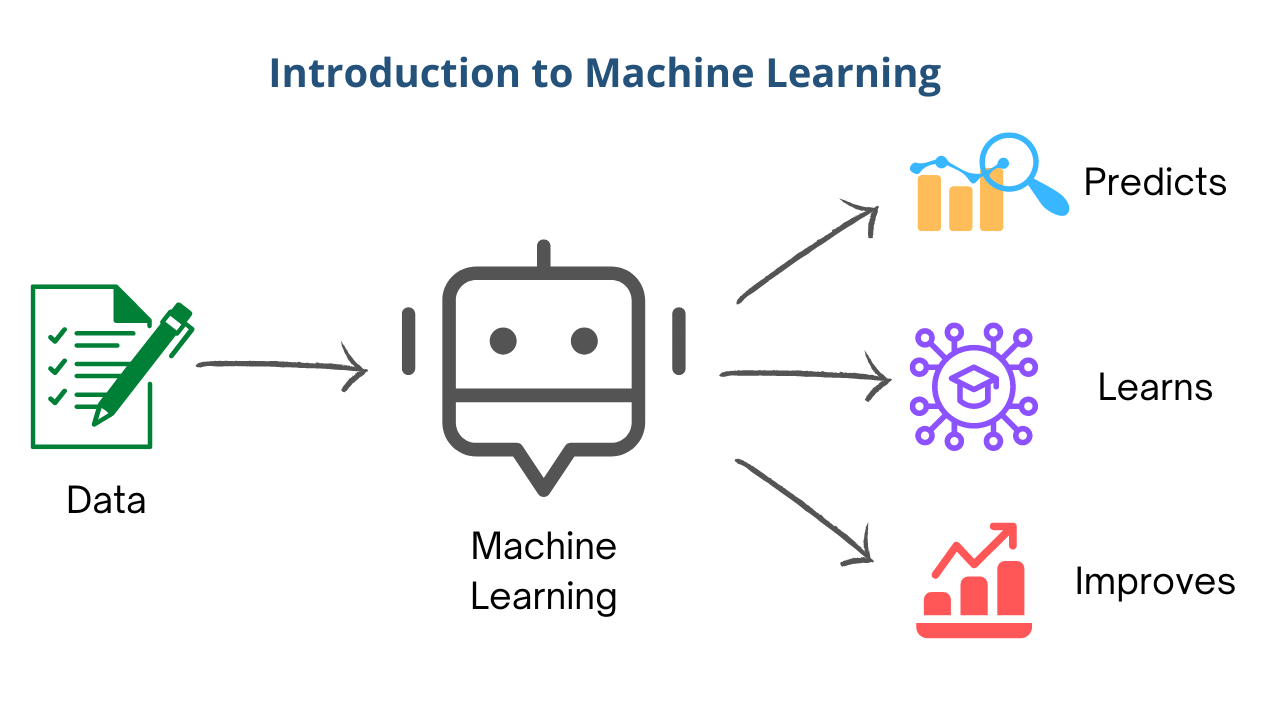INTRODUCTION
One of the most exciting and well-hyped areas of computer science is undoubtedly machine learning. Humans learn from their experiences, which is what sets them apart from machines. However, can a machine be made to learn? The response is in the yes! Machine learning makes it feasible. However, what is machine learning? What is it used for? And why is machine learning so widely used? We've got you covered, so don't worry. However, we advise you to review Python first by going through our previous articles before moving on to the subject.
What is Machine Learning ?
Machine Learning is a subdomain of Artificial Intelligence where humans train the model to learn, analyze and make decisions. The Machine Learning model improves its efficiency over time by learning from its experience. Data is the lifeline of ML, and the quality and quantity of data can significantly affect the performance of your model. That’s why it a good to know how to manipulate data and build a suitable model with the data.
How does Machine Learning work ?
Quick summary of how machine learning with regression works, using a housing price prediction example :
Define the Problem: We want to predict house prices based on features like square footage, number of bedrooms, and location.
Collect Data: Gather a dataset of houses, each with known features and prices.
Preprocess Data: Handle missing values, normalize data, and convert any non-numerical data into numbers.
Select Features: Choose relevant features (e.g., square footage, bedrooms, location rating) that affect house prices.
Choose a Model: Use a linear regression model, which learns a relationship between features and price.
Train the Model: Adjust the model to minimize the error between predicted and actual prices in the dataset.
Test the Model: Measure how accurately it predicts prices on a separate test dataset using metrics like Mean Absolute Error.
Predict New Data: Use the model to estimate prices for new houses based on their features.
Evaluate and Improve: Gather more data or adjust the model to improve accuracy over time
What makes Machine Learning so special ?
Machine Learning (ML) fundamentally relies on mathematics, but its uniqueness lies in its ability to self-improve based on the data provided. Instead of requiring constant redesign of algorithms to adapt to new data, ML algorithms can automatically enhance their performance simply by being fed more data. This capability is what distinguishes ML from traditional mathematical approaches.
Applications of Machine learning
The applications of Machine learning systems are also widespread in the fields of health care, banking, e-commerce, etc., Some of the widely used applications are Email spam filtering, Web search results, Pattern and Image recognition, Video recommendation, Fraud detection, Malware threat detection, Business process automation (BPA), and so on. Most social media platforms and content-delivering networks use Machine Learning algorithms to provide a more personalized and enjoyable experience.
Conclusion
It is no doubt that Machine Learning becoming a more widely accepted and adapted technology in many fields. In this article, we have got a brief introduction to Machine Learning and its types. As a next step, you can check out more interactive session using this link Stanford CS229: Machine Learning Full




